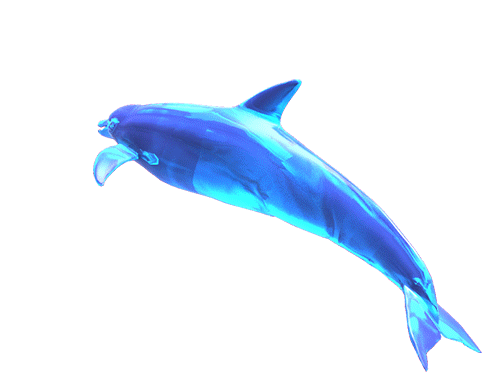Lulyasghost - Lulya




More Posts from Lulyasghost and Others
I feel like 90% of "ancient curses" are probably adequately explained by the fact that the self-proclaimed adventurers who ostensibly fell victim to them were, as a class, a bunch of dipshits who engaged in frequent international travel in an era before antibiotics and vaccines. Like, the list of novel pathogens these guys were risking exposure to on a regular basis was effectively "all of them". That's gotta leave a mark.


Bob Ross & Hoot on The Joy of Painting: ‘Mountain Mirage Wood Shape’ S15, E4 (1988)

Behold the rufous and black and rufous elephant shrew (Rhynchocyon petersi)! Despite its diminutive size, this critter is more closely related to elephants than it is to shrews. It’s also distantly related to manatees, dugongs, and hyraxes. It uses its long snout to scoop up worms, ants, termites, roots, berries, and shoots to eat. To move around its territory, this fast-moving mammal creates networks of foraging trails, which also serve as escape routes from predators.
Photo: Smithsonian's National Zoo, CC BY-NC-ND 2.0, flickr
⠀⢀⠤⠤⢄⡀⠀⠀⠀⠀⠀⠀⢀⠤⠒⠒⢤ ⠀⠏⠀⠀⠀⠈⠳⡄⠀⠀⡠⠚⠁⠀⠀⠀⠘⡄ ⢸⠀⠀⠀⠤⣤⣤⡆⠀⠈⣱⣤⣴⡄⠀⠀⠀⡇ ⠘⡀⠀⠀⠀⠀⢈⣷⠤⠴⢺⣀⠀⠀⠀⠀⢀⡇ ⠀⠡⣀⣀⣤⠶⠻⡏⠀⠀⢸⡟⠙⣶⡤⠤⠼ ⠀⠀⢠⡾⠉⠀⢠⡆⠀⠀⢸⠃⠀⠈⢻⣆ ⠀⠀⣿⣠⢶⣄⠀⡇⠀⠀⠘⠃⣀⡤⢌⣈⡀⠀ ⠀⠀⠀⠀⠀⠙⠼⠀⠀⠀⠀⠿⠋
-
 pencereyiackunuttum liked this · 4 days ago
pencereyiackunuttum liked this · 4 days ago -
 nycewell liked this · 4 days ago
nycewell liked this · 4 days ago -
 eyeofcorruption reblogged this · 4 days ago
eyeofcorruption reblogged this · 4 days ago -
 eyeofcorruption liked this · 4 days ago
eyeofcorruption liked this · 4 days ago -
 trnkgrza liked this · 4 days ago
trnkgrza liked this · 4 days ago -
 tmblrfaischifo reblogged this · 4 days ago
tmblrfaischifo reblogged this · 4 days ago -
 fleshypod liked this · 4 days ago
fleshypod liked this · 4 days ago -
 litttvibeee liked this · 4 days ago
litttvibeee liked this · 4 days ago -
 dandelarkchao liked this · 4 days ago
dandelarkchao liked this · 4 days ago -
 dzo82658 liked this · 4 days ago
dzo82658 liked this · 4 days ago -
 elexuscal liked this · 4 days ago
elexuscal liked this · 4 days ago -
 imadreamer1999 liked this · 4 days ago
imadreamer1999 liked this · 4 days ago -
 iou-1 liked this · 5 days ago
iou-1 liked this · 5 days ago -
 ninamariedi reblogged this · 5 days ago
ninamariedi reblogged this · 5 days ago -
 katyahina liked this · 5 days ago
katyahina liked this · 5 days ago -
 cuphead1753 liked this · 5 days ago
cuphead1753 liked this · 5 days ago -
 quillaribeneviento liked this · 5 days ago
quillaribeneviento liked this · 5 days ago -
 treeblog3 liked this · 5 days ago
treeblog3 liked this · 5 days ago -
 paradoxical-variant liked this · 5 days ago
paradoxical-variant liked this · 5 days ago -
 voorprxt reblogged this · 5 days ago
voorprxt reblogged this · 5 days ago -
 universoinesperado reblogged this · 5 days ago
universoinesperado reblogged this · 5 days ago -
 anoynmmxvsv liked this · 5 days ago
anoynmmxvsv liked this · 5 days ago -
 letzte-der-welt reblogged this · 5 days ago
letzte-der-welt reblogged this · 5 days ago -
 arson-is-lit liked this · 5 days ago
arson-is-lit liked this · 5 days ago -
 timeisweird reblogged this · 5 days ago
timeisweird reblogged this · 5 days ago -
 illyriashade56 reblogged this · 5 days ago
illyriashade56 reblogged this · 5 days ago -
 illyriashade56 liked this · 5 days ago
illyriashade56 liked this · 5 days ago -
 scio-sweetheart reblogged this · 5 days ago
scio-sweetheart reblogged this · 5 days ago -
 newtothisplace reblogged this · 5 days ago
newtothisplace reblogged this · 5 days ago -
 mes-petites-confiseries liked this · 5 days ago
mes-petites-confiseries liked this · 5 days ago -
 lavenderstarfield reblogged this · 5 days ago
lavenderstarfield reblogged this · 5 days ago -
 fireyanha liked this · 5 days ago
fireyanha liked this · 5 days ago -
 eistanz reblogged this · 5 days ago
eistanz reblogged this · 5 days ago -
 eistanz liked this · 5 days ago
eistanz liked this · 5 days ago -
 galacticcdust reblogged this · 5 days ago
galacticcdust reblogged this · 5 days ago -
 shapeshiftingmagic reblogged this · 5 days ago
shapeshiftingmagic reblogged this · 5 days ago -
 revealedlight reblogged this · 5 days ago
revealedlight reblogged this · 5 days ago -
 nukedaddysblog liked this · 5 days ago
nukedaddysblog liked this · 5 days ago -
 auroragehenna liked this · 5 days ago
auroragehenna liked this · 5 days ago -
 finchwood4k liked this · 5 days ago
finchwood4k liked this · 5 days ago -
 bkh84-blog reblogged this · 5 days ago
bkh84-blog reblogged this · 5 days ago -
 bkh84-blog liked this · 5 days ago
bkh84-blog liked this · 5 days ago -
 underscoregrace liked this · 5 days ago
underscoregrace liked this · 5 days ago -
 morexlovexmore liked this · 5 days ago
morexlovexmore liked this · 5 days ago -
 v13nn4 liked this · 5 days ago
v13nn4 liked this · 5 days ago -
 o365 reblogged this · 5 days ago
o365 reblogged this · 5 days ago -
 fromtheashes76-2 reblogged this · 5 days ago
fromtheashes76-2 reblogged this · 5 days ago -
 yosolomj liked this · 5 days ago
yosolomj liked this · 5 days ago






















